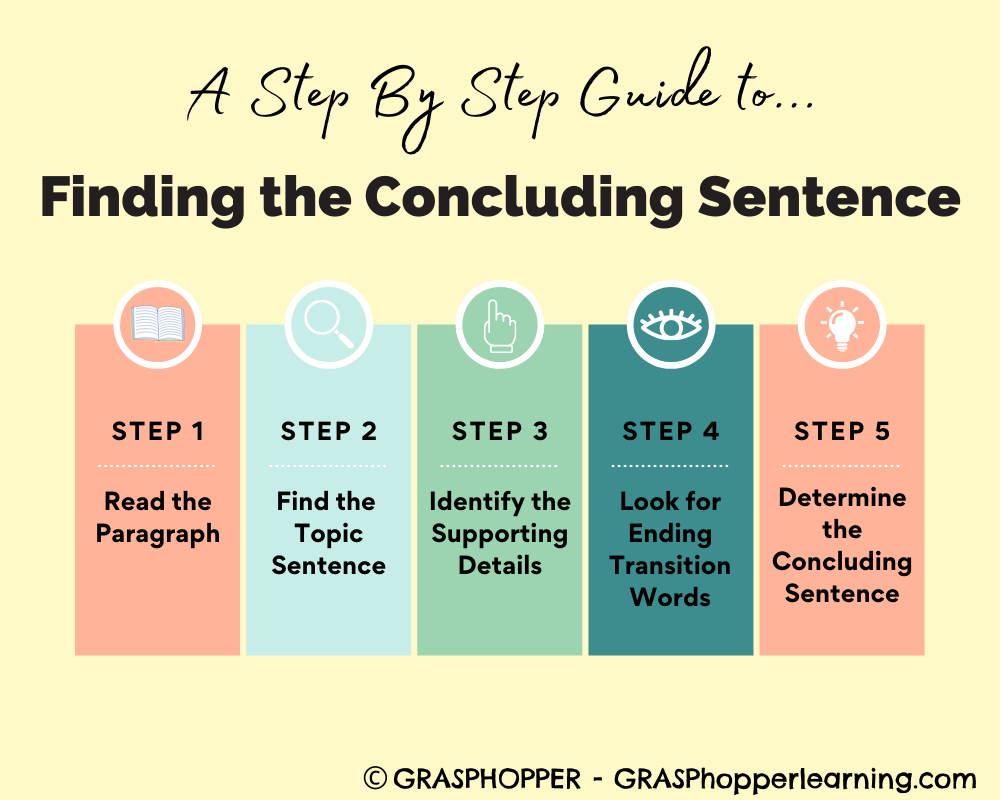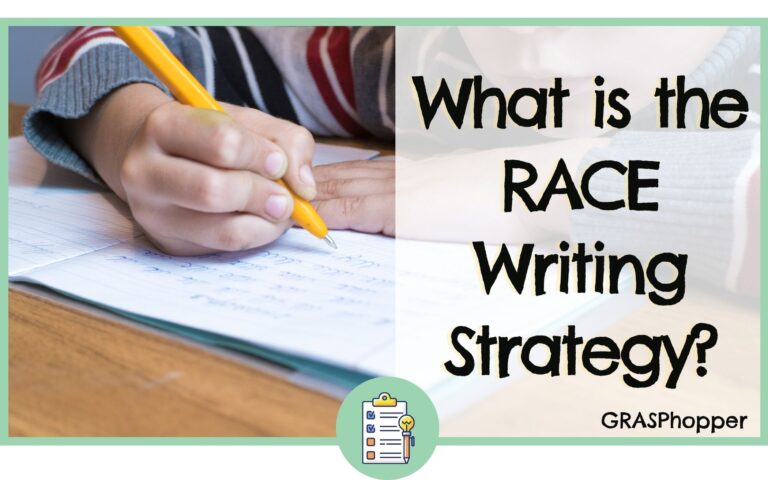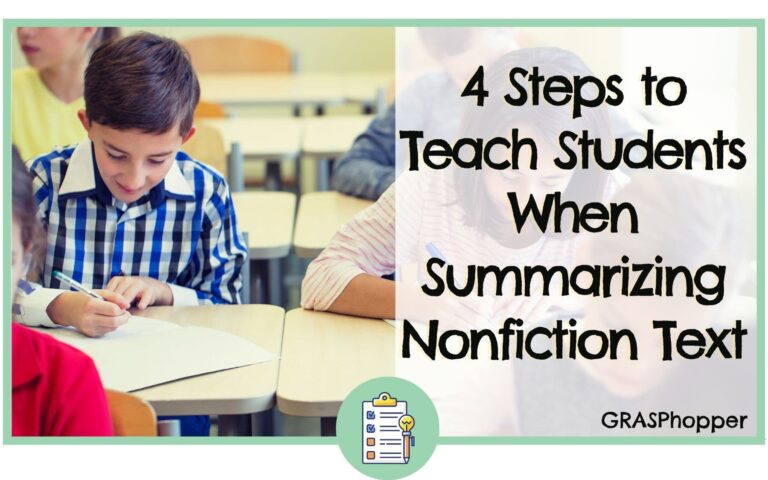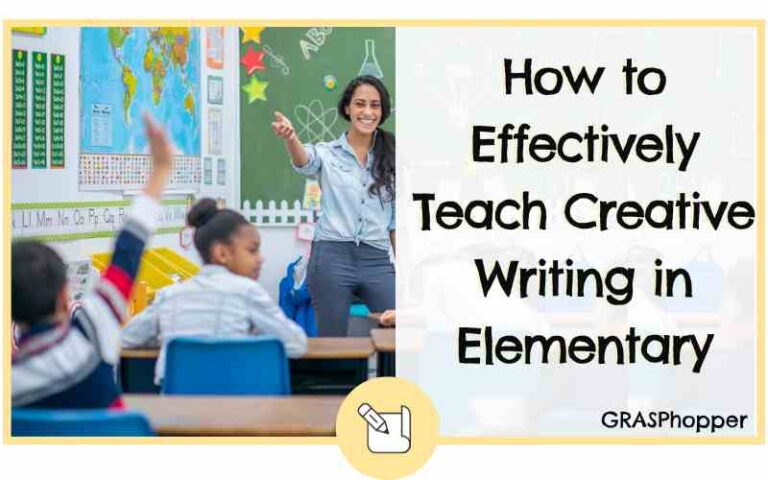
Concluding Sentences
Ah! It’s finally Friday night! You grab your favorite snack, pour yourself a glass of water (or wine!), sit back on your comfy couch and start looking through TV shows to watch! You pick the perfect one and are enjoying it thoroughly. Right at the climax of the show, it ends!
How do you feel? Do you feel as though you received no conclusion and it was incomplete? I’m usually left feeling confused, unsatisfied, and quite frankly, annoyed.
The same can be said about writing. You can write an amazing, detailed-oriented paragraph; but, if you forget your concluding sentence, your reader is left unsatisfied and wondering what it was all about.
Conclusion sentences can be a challenge for students to learn. As an educator, you may even feel as though you have to go over concluding sentences every writing unit. That is why, in this blog, we will be looking at what a conclusion sentence is and the steps the students should take to find the concluding sentence. By teaching this foundational skill, you won’t have to continue to be a broken record!
What is a Concluding Sentence?
When we teach students about concluding sentences, we make sure they have a basic definition of the concept.
We teach them that a concluding sentence is usually the last sentence of the paragraph that summarizes the main idea of the paragraph. Concluding sentences are so important in writing. They provide an opportunity for the author to tie the topic sentence and the supporting details together.
In other words, it allows the author to recap the main idea of the paragraph. The conclusion sentence should not include any new information but rather summarize what the paragraph was about.
How to Find Concluding Sentences
Concluding sentences can be a challenge for students to grasp, but that does not mean it needs to be a challenge to teach! During our 12+ years of teaching, we’ve had many trials and tribulations when getting our students to grasp this concept.
But we finally figured it out! Here are our tried and true steps to teach students how to find concluding sentences in a text.

- Read the paragraph.
- Find the topic sentence/ main idea.
- This will help students more easily identify the concluding sentence.
- Find the supporting details that give new and on-topic information about the main idea.
- Look for ending transition words. Here are some examples below:
- All things considered
- All in All
- Finally
- In conclusion
- To summarize
- In Short
- To Conclude
- Lastly
- Determine the concluding sentence. Do this by reading the rest of the sentence connected to the transition word. If this sentence restates or summarizes the topic sentence, then you likely found it!

When you download our no-prep concluding sentences resource, you’ll have many pages of practice activities at your fingertips. Since these activities are differentiated, ALL OF YOUR STUDENTS can practice!
Get your Concluding Sentences resource.
Types of Concluding Sentences
Once we’ve taught what a concluding sentence is and how to find it, we take some time to explain the different types of concluding sentences. These are the four different types we teach first.
- Restate– This is when you restate the topic sentence using synonyms.
- Teaching Prompts
- 📣 “Which sentence has the same meaning as the topic sentence but uses different words?”
- Teaching Prompts
- Question– This is when you ask the reader a question about the topic. This type of concluding sentence often sparks discussion about the topic and requires higher-order thinking.
- Teaching Prompts
- 📣 “Which sentence in the paragraph asks a question about the topic?”
- Teaching Prompts
- Excitement– This is a concluding sentence that emphasizes the topic sentence. You will often see an exclamation point at the end of these concluding sentences.
- Teaching Prompts
- 📣 “Which sentence has a strong emotion about the topic
- Teaching Prompts
- Suggestions– These concluding sentences leave the reader with something to do.
- Teaching Prompts
- 📣 “Which sentence gives you a suggestion about the topic?”
- Teaching Prompts
Why focus on the foundations of Concluding Sentences?
Throughout our years of teaching, we have found that taking the time to focus on the foundations of concluding sentences has led to greater success across all areas of literacy- reading comprehension and writing.

We notice that when our students can explain the definition, purpose and types of concluding sentences, they are better able to understand the paragraphs they have read.
Also, understanding the concept of concluding sentences helps our students when they are writing. They are more likely to add a concluding sentence into their own writing, leaving readers satisfied and informed.
There is More!
GRASPhopper wants to make sure everyone understands concluding sentences so we’ve created a video lesson!
Watch GRASPhopper’s step-by-step teaching video as a guide. The video will not only increase your knowledge of how to effectively teach concluding sentences but was created to be used directly with your students too!
We hope you found this blog post informative and helpful! Do not forget to sign up for our newsletter and follow us on social media!










